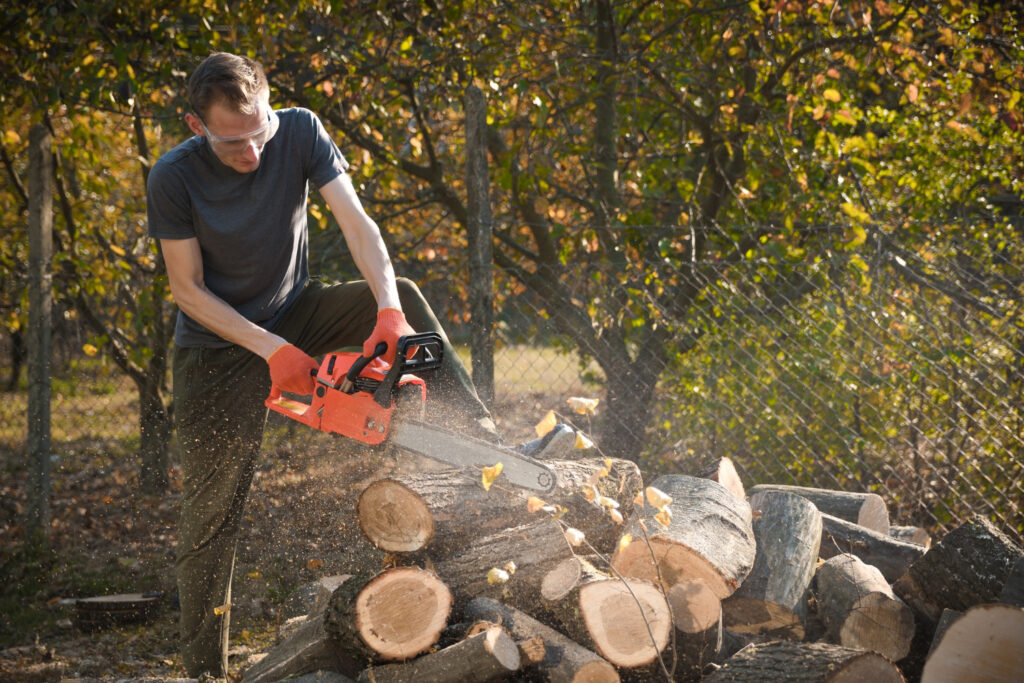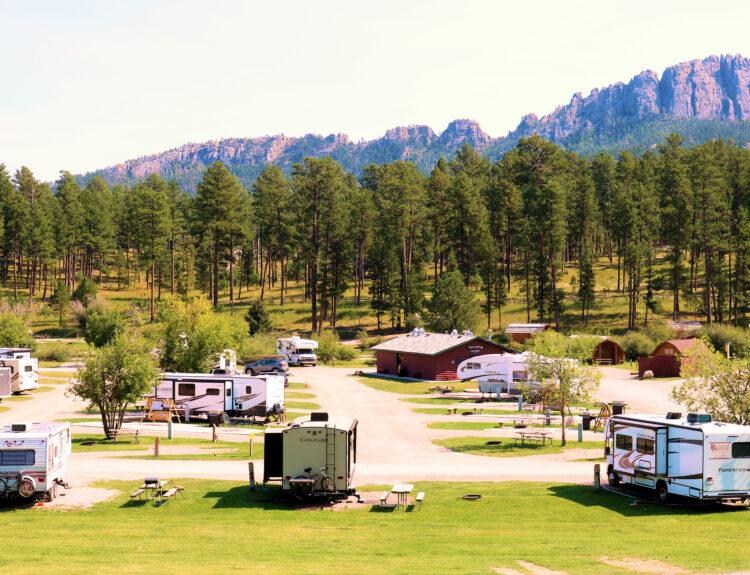Living life on the road can be incredibly freeing, but it still comes with bills to pay. If you’re an RVer, vanlifer, or digital nomad looking to stretch your travel budget or make a living while exploring, workamping jobs might be the perfect solution. These flexible roles let you trade your time and skills for a free place to stay—and often, a paycheck too. In this guide, we’ll walk you through what workamping is, the kinds of jobs available, how much you can realistically earn, and the best places to find trustworthy gigs.
Key Takeaways:
- Workamping jobs allow RVers to earn money while traveling across the U.S.
Common roles include campground hosts, maintenance, and seasonal retail. - Many workamping gigs offer free campsites plus hourly pay or stipends.
- Trusted job boards like Workamper News and CoolWorks make finding gigs easy.
- Work camping can be a sustainable way to travel long-term without draining savings.
What Is Workamping and Why It’s Growing in Popularity?
Having a work camping job has gone from a niche option to a mainstream lifestyle choice, especially with the rise of full-time RV living. More people are rethinking traditional housing and careers, opting for a simpler, travel-focused life. With housing costs skyrocketing and remote work growing, it makes sense that so many are looking for ways to work while staying mobile.
Workamping fills that need by offering short-term, seasonal, or flexible jobs that often include a free campsite. These roles help cover travel expenses, reduce monthly costs, and even allow you to build a small nest egg. Employers—particularly in rural or seasonal destinations—struggle to find reliable help. Workampers meet that demand while enjoying life on the road. The lifestyle also attracts retirees, minimalists, and digital nomads, all seeking purpose, connection, and flexibility without sacrificing comfort.
A Simple Definition of Workamping
At its core, workamping is a mash-up of “working” and “camping.” You’re living in your RV or camper while doing a job, usually temporary or seasonal, that helps offset your travel costs. In many cases, you’ll receive a free campsite with full hookups, and depending on the gig, you might also get paid hourly or receive a stipend.
Workamping jobs vary widely. Some are just a few hours a week in exchange for a campsite. Others are full-time positions with wages, benefits, and bonuses. Common industries include hospitality, campground operations, maintenance, retail, agriculture, and event support. The common thread is flexibility, with most job duties are designed to accommodate travelers and those living a nomadic lifestyle.
Who Workamping Jobs Are Best Suited For
Workamping jobs are ideal for full-time RVers, retirees, or anyone wanting to travel while cutting costs. It’s a great fit for couples, solo travelers, and even those taking a career break. If you’re flexible, handy, and don’t mind pitching in where needed, there’s likely a workamping job that suits you.
Retirees often choose work camping as a way to stay active and social while reducing their monthly expenses. Many use it to stretch fixed incomes or supplement retirement savings. Younger travelers might turn to workamping for adventure, to take a break from traditional work, or to transition into remote careers. Regardless of your background, if you enjoy problem-solving, working with people, or being outdoors, you’ll find options that align with your skills and interests.

Common Types of Workamping Jobs Across the U.S.
One of the best parts about workamping is how many options there are. As a work camper you’re not stuck in one type of job or location. From campground hosting in national parks to harvesting crops in the Midwest, there are roles that suit a wide range of abilities and interests.
Jobs often follow seasonal hiring patterns. Spring and summer are peak seasons for campgrounds and parks, while fall is prime time for agricultural harvesting and retail warehouse work. Planning your route and schedule around these trends can help you stay employed and financially secure year-round.
Campground Hosts
Being a campground host is one of the most classic and sought-after workamping jobs. With a camp host job, you serve as the face of the campground. Your key responsibilities might include general labor like greeting campers, answering questions, or assisting guests with check-ins and reservations, collecting fees, cleaning restrooms and campsites, monitoring quiet hours, and reporting issues to park management.
These jobs are available in national parks, state parks, national forests, and private campgrounds. Some require more interaction and guest services, while others are focused on light maintenance and security. Compensation often includes a free full-hookup campsite, and some parks offer a small stipend, hourly wage, or end-of-season bonus. Hosting provides a great balance of routine and social interaction, especially for those who enjoy helping others.
Maintenance and Groundskeeping
If you enjoy hands-on work and like staying active, maintenance roles offer a rewarding experience. Duties include mowing grass, landscaping, fixing plumbing and electrical issues, painting, maintaining trails, hauling debris, and general repairs. These roles are especially valuable at campgrounds, resorts, and retreat centers that require year-round upkeep.
Basic handyman skills are helpful, but not always required. Employers often look for individuals who are reliable, safety-conscious, and willing to learn. These jobs tend to be more physically demanding but also offer better compensation, often including hourly wages and a free campsite. Perfect for those with a maintenance background or anyone who likes to keep busy with practical tasks.
Seasonal Retail and Warehousing
Retail and warehouse jobs provide some of the most lucrative workamping opportunities. Many workampers participate in programs like Amazon’s CamperForce, which hires RVers during peak holiday seasons for warehouse work. These jobs offer competitive hourly pay, overtime, bonuses, and a stipend for campsite costs.
Other employers include national park concessionaires, ski resorts, amusement parks, and tourist destinations. Positions range from cashier and stock clerk to food service and ticket booth attendant. These roles are fast-paced, customer-facing, and perfect for outgoing individuals who don’t mind working in a structured environment. They’re also a good way to save money quickly over a short season.
Farm Work and Harvesting Jobs
Agricultural workamping gigs are most common during the late summer and fall harvest seasons. Jobs include picking apples, grapes, berries, and other produce, as well as pruning vines, packing boxes, and sorting crops. Sugar beet harvesting in states like North Dakota and Minnesota is a well-known workamping opportunity that pays well, especially when overtime is available.
These roles are physically demanding and often require long hours in outdoor conditions. However, they can be very rewarding for those looking to earn a solid paycheck in a short amount of time. Employers typically provide a full-hookup site and pay by the hour or per unit of produce harvested.
Event-Based Gigs and Festival Work
Short-term, event-based gigs offer variety and excitement for workampers looking for a quick job with unique perks. These jobs include helping set up tents, selling merchandise, managing ticket lines, staffing booths, or working security at fairs, festivals, concerts, and expos.
While they typically last only a few days to a couple of weeks, these gigs often include free admission, parking, meals, and sometimes a campsite. They’re a great way to meet new people and explore local culture without committing to a long-term position.

How Much Can You Really Make Workamping?
Earnings from workamping depend on the type of job, location, experience, and season. Some roles are purely volunteer, while others pay competitive hourly wages with added perks. Workamping can help reduce or eliminate major expenses, allowing you to save money even if the income isn’t substantial.
The key is to evaluate the total compensation package—not just the paycheck. Free campsites, amenities, and bonuses can be worth hundreds or even thousands of dollars over time. Many work campers use these savings to travel more frequently, invest in their RVs, or fund their long-term lifestyle goals.
Paid vs. Volunteer Workamping Jobs
RV volunteers positions typically require 10 to 20 hours of weekly work in exchange for a free RV site. These roles are often found in government-run parks or nonprofits with limited budgets. They’re ideal for those who value location, community involvement, and flexibility over income.
Paid jobs usually include hourly wages ranging from $10 to $20+, depending on the role and your qualifications. Skilled labor, physically demanding work, and peak season availability can push pay rates higher. Some employers offer completion bonuses, travel stipends, or season-end incentives. Be sure to factor in campsite value, which can equal $500 to $1,000 monthly.
Beyond the Paycheck: Perks That Add Value
Work camping often comes with valuable extras that reduce your daily expenses. Common perks include free laundry, propane refills, discounted gear, meals, and access to local attractions. Some employers even provide health and wellness benefits for long-term staff.
These non-monetary benefits enhance your quality of life on the road and can stretch your budget much further than cash alone. Whether it’s free Wi-Fi, free firewood, or the chance to live near a national park, the right perks can make a job far more attractive.
Where to Find Legitimate Workamping Jobs
With so many listings online, it’s crucial to stick with reputable sources and do your research. Not every opportunity lives up to the promises in its job post. Look for workamping reviews, ask for a written agreement, and talk to current or former work camper when possible.
Networking also plays a big role. Word-of-mouth recommendations often lead to the most rewarding gigs. Stay active in online communities, attend RV meetups, and keep an eye on trusted job boards.
Workamper News
Workamper News is one of the oldest and most respected platforms dedicated to workamping. With a paid subscription, you gain access to thousands of listings, detailed employer profiles, training materials, and a supportive member forum.
This platform is especially helpful for beginners, as it provides guidance on resumes, applications, and contract negotiation. Employers are often long-time users, which creates a more consistent and reliable experience.
CoolWorks
CoolWorks specializes in seasonal jobs in national parks, resorts, and adventure destinations. You can filter listings by location, season, and job type. It’s a popular site for finding visually stunning, experience-based roles that attract adventurous travelers.
Jobs range from housekeeping in Yellowstone to zipline guiding in Colorado. The site also includes tips and testimonials to help you decide if a particular role fits your lifestyle.
Facebook Groups and Forums
Facebook groups and online forums can be a goldmine for job leads, tips, and candid reviews. Popular groups include “Workamping for Beginners in New York” and “RV Park Jobs USA.” Members share real-time job postings, employer feedback, and advice.
Always vet these listings independently. Since anyone can post, not all opportunities are legitimate or fair. Still, these communities are excellent for networking and learning the ins and outs of workamping.
Direct Outreach to Campgrounds
Some small or independently owned RV parks don’t advertise on job boards. Reaching out directly—via phone, email, or in person—can uncover hidden opportunities. Keep a list of places you’d like to visit and call ahead to ask if they need help.
Being proactive shows initiative and flexibility, traits that employers love. You may even find a recurring gig that welcomes you back each season.

How to Choose the Right Workamping Job for You
Not all workamping jobs are a perfect fit. It’s important to evaluate each opportunity based on your preferences, schedule, and lifestyle needs. Ask questions, do your homework, and think beyond the paycheck.
The best jobs enhance your travel experience, support your financial goals, and leave you with good memories. Poor fits can lead to burnout, stress, or feeling stuck in the wrong place.
Time Commitment and Workload
Clarify how many hours are expected per week and whether the schedule is flexible or fixed. Some roles require a few hours a day, while others are 40-hour weeks with rotating shifts. Ask if you’ll be on-call, what tools you’ll need, and what the daily routine looks like.
Matching the workload to your energy level and availability helps prevent overcommitment. It also gives you space to enjoy the location and relax between shifts.
Location, Climate, and Amenities
Consider the setting—will you be in a remote forest, a bustling tourist town, or a desert RV park? Check seasonal weather patterns, access to groceries or medical care, and available amenities like full hookups, Wi-Fi, and laundry.
Jobs in beautiful but remote areas may lack cell service or basic comforts. Think about your must-haves and deal breakers before committing.
How to Vet the Employer or Park
Look up reviews on job boards, Google, and social media. Ask the employer for references from previous work campers. Request a written agreement outlining duties, pay, hours, campsite details, and policies.
A reputable employer will gladly provide documentation and answer your questions. Transparency early on protects both parties and sets the tone for a positive experience.
Tips for First-Time Workampers
Getting started with workamping can feel overwhelming, but a few smart strategies can set you up for success. Whether you’re switching from full-time employment or hitting the road for the first time, preparation makes all the difference.
Learn from seasoned workampers, test the waters with short-term gigs, and adjust your expectations as needed. The more informed you are, the smoother your transition will be.
Questions to Ask Before Accepting Any Job
Before saying yes, get answers to key questions: What are the daily tasks? How many hours per week? Is the schedule flexible? What hookups are included? Are pets or guests allowed? What’s the policy if plans change?
Write down your questions and ask them during the interview or initial contact. A clear understanding up front avoids misunderstandings later.
How to Create a Simple Resume for Workamping
Your resume doesn’t need to be fancy, but it should be clear and relevant. Highlight skills like customer service, maintenance, time management, and communication. Include informal experience—gardening, event planning, home repairs—if it relates to the job.
Keep it to one page. Include your RV details (size, hookups), your availability dates, and preferred regions. Employers appreciate concise, thoughtful applications.
Plan Your Route and Travel Time
Check the job’s start date and plan enough time to arrive without stress. Map your route, calculate fuel costs, and factor in rest days or sightseeing stops. Keep your rig maintained to avoid delays.
If you’re stringing together gigs, leave buffer time between jobs in case of unexpected detours or downtime. A well-timed travel plan supports both your sanity and your wallet.
Why Workamping Might Be the Change You’ve Been Looking For
Workamping isn’t just about earning money—it’s about building a lifestyle that supports freedom, purpose, and connection. Whether you’re downsizing, transitioning into retirement, or chasing adventure, workamping helps you stay mobile while covering your basic needs.
With a little research and planning, you can create a life where work fits around your travels, not the other way around. Join a growing community of people redefining what it means to live and work in the U.S.—one campsite at a time.
Frequently Asked Questions
1. Do I need a special visa or permit to workamp in different U.S. states?
If you are a U.S. citizen, you don’t need a special visa or permit to workamp in different states. However, you do need to comply with both federal and state labor laws, which may vary depending on the type of job. For example, some states require employers to conduct background checks for positions at public campgrounds or parks. If your workamping gig includes driving vehicles, handling guest money, or working with children, additional licensing or screening may be required. Make sure to ask your employer what documentation is needed before you start.
2. Can international travelers participate in workamping?
Yes, but only with the proper legal authorization. International travelers must have a valid work visa that permits employment in the United States. Most workamping jobs fall under seasonal or temporary labor, so visas like the J-1 (Exchange Visitor) or H-2B (Temporary Non-Agricultural Worker) may apply—but these are typically arranged by large employers or organizations sponsoring international workers.
It’s important to note that tourism or visitor visas, such as the B-1/B-2, do not allow for any paid work, including workamping. Attempting to work without proper authorization can result in visa cancellation and future entry bans. If you’re an international traveler interested in workamping, it’s best to consult with an immigration attorney or the U.S. embassy in your home country before applying.
3. Are there age restrictions for workamping jobs?
Most workamping jobs require workers to be at least 18 years old, as these roles are considered formal employment. There’s no maximum age limit, and in fact, many employers specifically welcome retirees and seniors because of their reliability and experience. That said, some roles can be physically demanding—such as campground maintenance, warehouse work, or harvest jobs—so your ability to safely perform the required duties may come into play.
Some employers may also have their own preferences or insurance-related restrictions, especially if you’re operating machinery or working in higher-risk environments. If you’re older and have physical limitations, don’t worry—there are plenty of less strenuous roles such as guest check-ins, campground hosting, or retail positions that may be a better fit.
4. Is workamping a good fit for families with children?
Yes, but it depends on the job and the campground. Some workamping positions are family-friendly and even include on-site amenities like playgrounds, open spaces, or kid-friendly activities. Campgrounds that cater to families are more likely to welcome workampers with children, especially if you’re homeschooling or traveling full-time as a family.
However, not all positions are suitable. For example, some employers limit the number of people allowed on a site, or may have strict rules around noise and guest behavior that make it harder for families with kids to participate. You’ll also want to think about practicalities like access to laundry, grocery stores, medical care, and good internet if you’re schooling online. If you’re applying with kids, it’s important to clearly ask about family accommodations, schooling policies, and whether your children will be allowed to stay with you on-site.
5. Do I need my own RV to get workamping jobs?
In nearly all cases, yes. Most workamping jobs assume you will provide your own RV or camper, as the employer typically only provides a full-hookup site—not housing. Your rig becomes both your home and your base while you work. Employers usually offer water, electric, and sewer hookups, but amenities like Wi-Fi or laundry facilities may vary by location.
That said, there are a few exceptions. Some larger employers—like national parks, remote resorts, or warehouses—occasionally offer employee housing or shared accommodations. These are rare and often go quickly, so they’re not the norm in the workamping world. If you’re just starting out and don’t yet have an RV, you might consider do a little browse work looking for one of these rare housing-included gigs to test the waters before investing in your own setup.





